Juvenile delinquency in Italy: violence on the rise, but not the number of offences
The violent nature of the crimes committed by young people is on the rise and the age at which they commit their first crime is falling, but the number of cases is not increasing. This is the result of a study we carried out on the basis of data from the Juvenile Social Service Office – USSM in Milan, in collaboration with the Department of Juvenile and Community Justice (DGMC) of the Ministry of Justice. The study was presented today at the conference “Juvenile deviance in Italy: episodes or transformation?”, organised in collaboration with the Faculty of Psychology of the Università Cattolica.
The study (available here) follows our previous mapping (2022) of the so-called juvenile gang phenomenon, in order to identify recent trends in juvenile delinquency. In addition to official statistics, information was analysed on a sample of 100 young people in the custody of the USSM of Milan in the two-year periods 2015-2016 and 2022-2023.
A comparison of the two periods reveals important factors of change:
- Crime is not increasing, but violence is: in line with the national trend reported in official statistics, robberies and personal injuries are increasing, while theft and drug dealing are decreasing. The number of children with conflictual and violent family relationships is also increasing.
- Young people are committing crime at younger ages: the average age of first offence is falling significantly, with more than half of all offences committed before the age of 15.
- Psychological and relational problems, violence and self-harm are on the rise, while the majority of young people recently taken into custody do not come from particularly disadvantaged socio-economic backgrounds.
- Foreign-born young people have the highest percentage of NEETs, but there was a decrease in 2022-23 compared to the previous period. Instead, there was a significant increase in NEETs among Italians and second generations. The latter contrasts with the overall decrease in NEETs in Italy.
- Cases of addiction are increasing across the board among young people of different nationalities and economic backgrounds.
The study also highlighted some continuities with the past, such as the tendency of juveniles to commit crimes mainly in complicity with others (around two thirds of cases) and the presence of school problems (performance, absenteeism or behaviour) in almost all offenders. In both periods considered, the majority of juveniles come from families where both parents are present and living together at the time of being taken into custody.
During the conference, the results of the exploratory research were discussed with experts in criminology, sociology and psychology, as well as representatives of public institutions and the third sector. The aim was to develop effective and coordinated interventions involving all the contexts in which young people are formed: family, school and community. This multidisciplinary approach was reinforced by the involvement of the Faculty of Psychology in the analysis of the results of the study.




Photo credits: Marta Carenzi | Università Cattolica del Sacro Cuore
“The episodes of juvenile delinquency make us believe that there is an increase in the number of cases,” explains Prof. Ernesto Savona, director of Transcrime, “but the official data reveal a different problem: it is not the number of cases that is increasing, but the alarming violence of the behaviour. In order to prevent this change from becoming systemic, we must intervene today to address the causes and remedies. In this conference, together with experts in the field and representatives of institutions, we wanted to identify a set of interventions to address situations of social distress and correct the trajectory of prevention and management policies”.
The exploratory study we have carried out on the juvenile universe is full of meanings and predictive indications”, says Antonio Sangermano, Director of the Department of Juvenile and Community Justice, “certainly useful to identify and prevent the moments of individual and relational fracture that can drive a young person to crime. Dialogue, training, empowerment, focusing on the “dual unity” of rights and duties, strengthening the link between punishment and prospects: these and other challenges have been taken up by the DGMC and find an important moment of reflection in the report and in this conference”.
The increasing violence that characterises juvenile delinquency,” says Maria Carla Gatto, President of the Juvenile Court of Milan, “should lead us to invest in a structured way in the prevention of distress among children and adolescents, guaranteeing more resources and better coordination between social services and psychological and health services, in order to intercept the signs in good time.
Speakers at the conference also highlighted the role of the Covid-19 pandemic in increasing the individual, psychological and relational vulnerability of young people, as well as the role of social media in amplifying the phenomenon of the commodification of crime, i.e. the dissemination of violent content for financial gain or visibility. In order to define prevention and social reintegration strategies, it is essential to understand the phenomenon in all its complexity and territorial diversity.
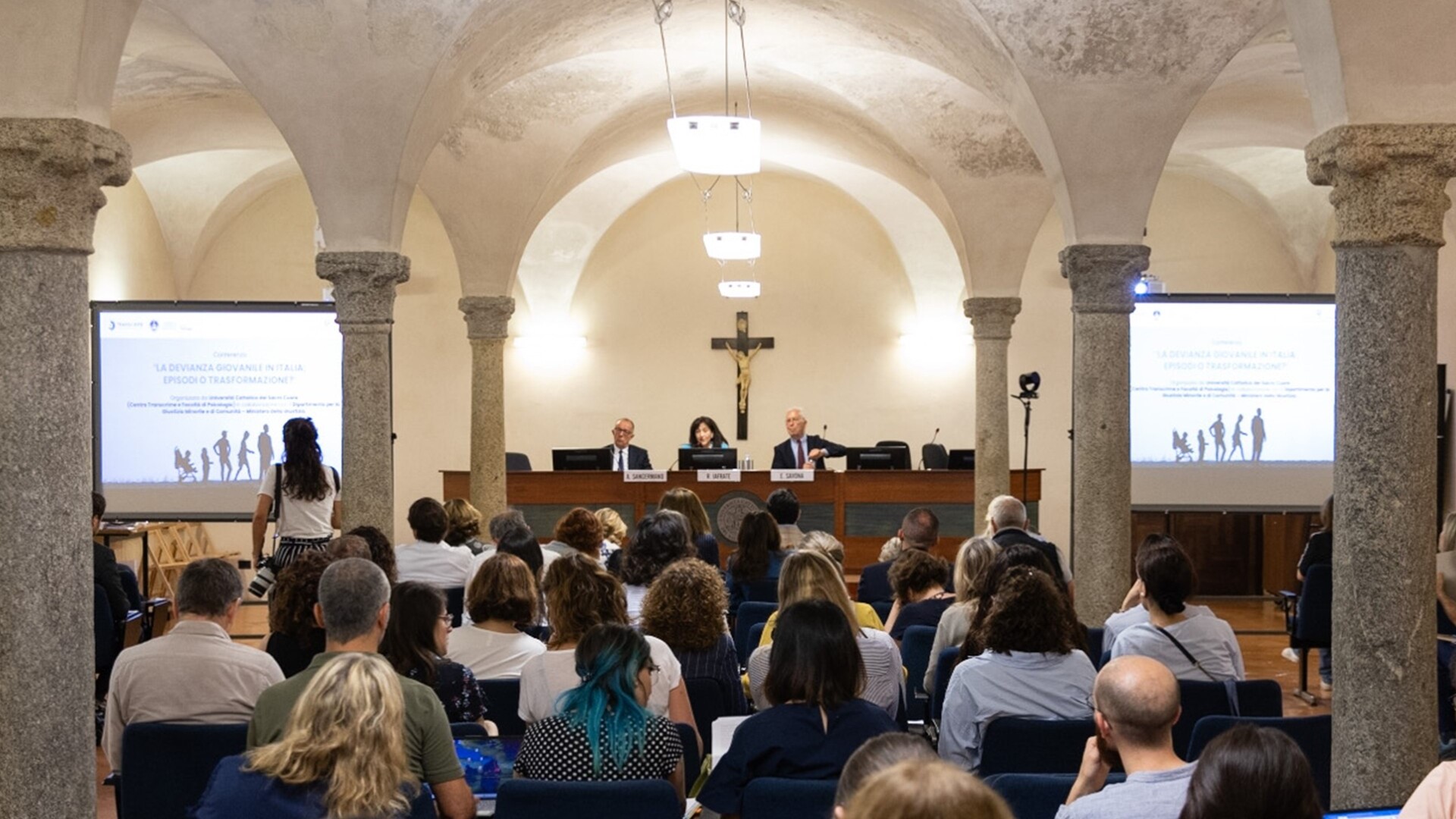
Latest news
View all news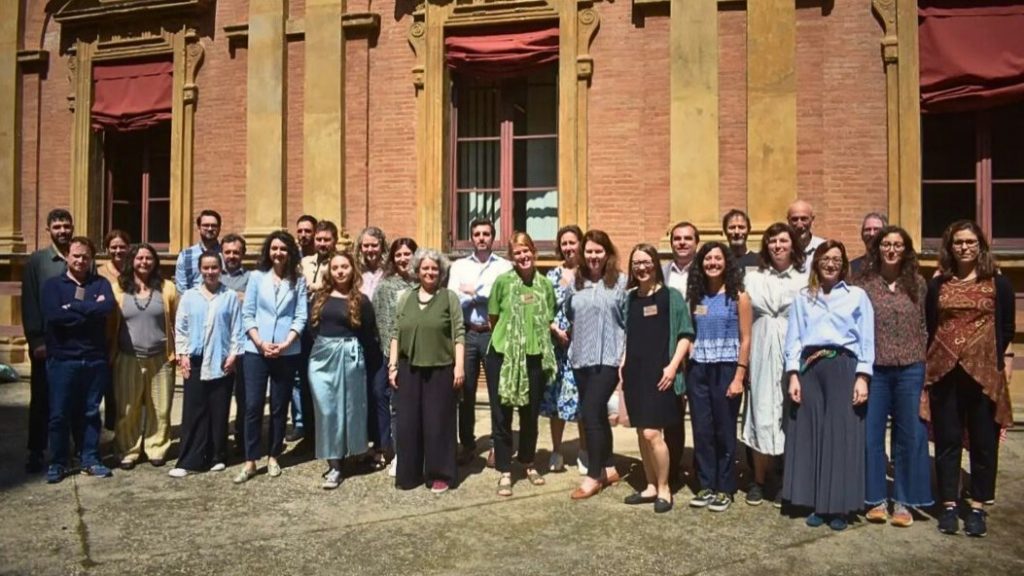
RESPOND Kick-Off Meeting
On 22-24 May, the kick-off meeting of the RESPOND project took place at the Alma Mater Studiorum of the University of Bologna together with the consortium partners. RESPOND – Rescuing Democracy from Political Corruption in Digital Societies – is a five-year project funded by the European Commission’s Horizon Europe programme…

Conference: “Juvenile Deviance in Italy: Episodes or Transformation?”
Date: 17 June 2024 Time: 9.30am – 1.30pm Location: Catholic University of the Sacred Heart (Milan), Largo Gemelli 1 Room: Cripta Aula Magna In Italian Public perceptions of juvenile delinquency are often influenced by a distorted and alarmist narrative. But what do the official…
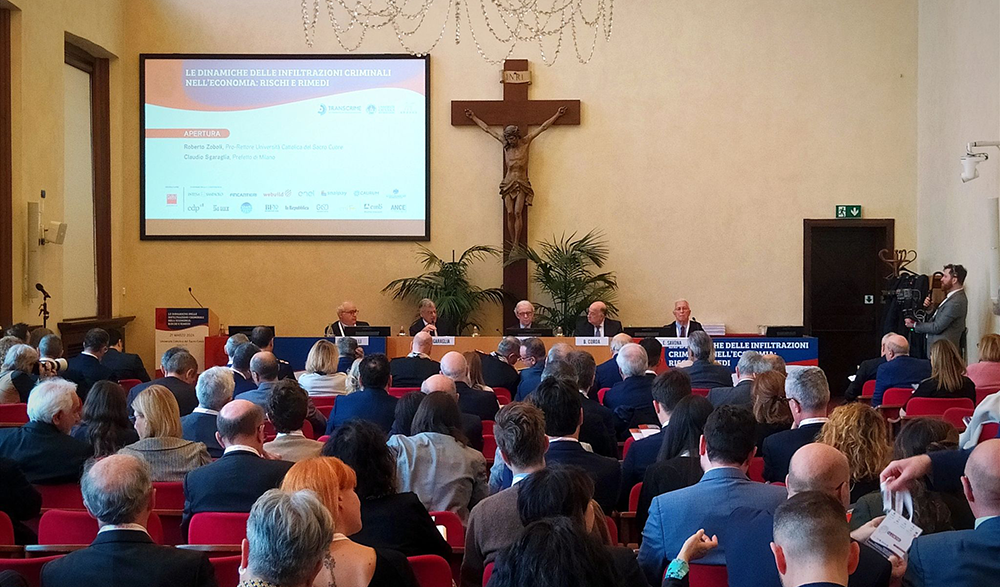
Infiltration into the legal economy: the advanced stage of organised crime in Italy
A one-day conference on ‘The Dynamics of Criminal Infiltration in the Economy: Risks and Remedies‘ was held at the Università Cattolica del Sacro Cuore in Milan. The initiative, organised by Transcrime-Università Cattolica del Sacro Cuore and ANFACI (Associazione Nazionale Funzionari Amministrazione Civile dell’Interno), brought together researchers, prefects, magistrates, business and…
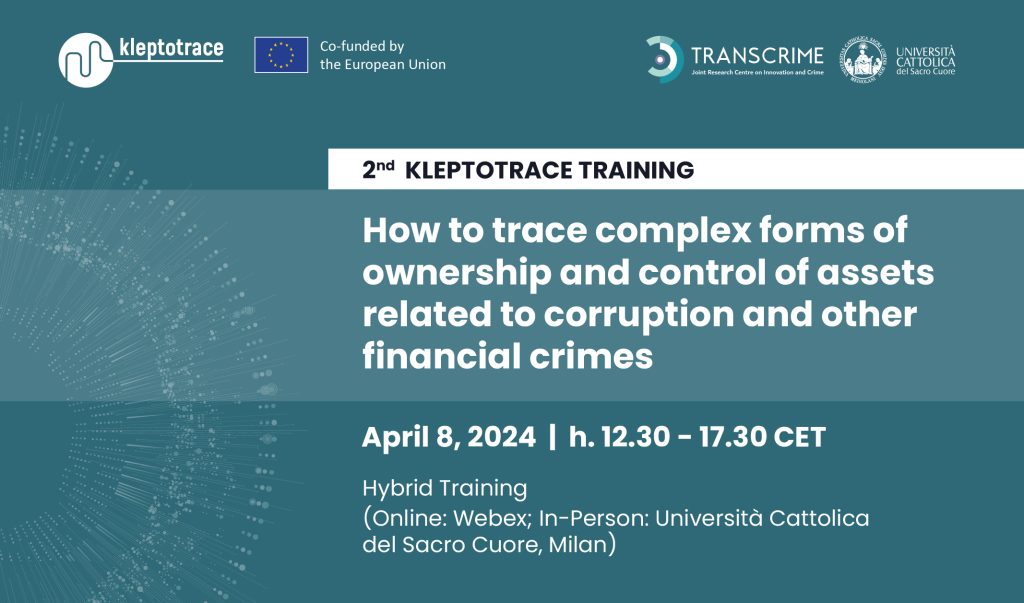
Second KLEPTOTRACE Training for Public and Private Organisations
“How to trace complex forms of ownership and control of assets related to corruption and other financial crimes” 8 April, 2024 | 12:30 – 17:30 CET Hybrid attendance: online (webex) or on-site (Università Cattolica del Sacro Cuore, Largo Gemelli 1, Milan) The second training session will cover best practices, database and…
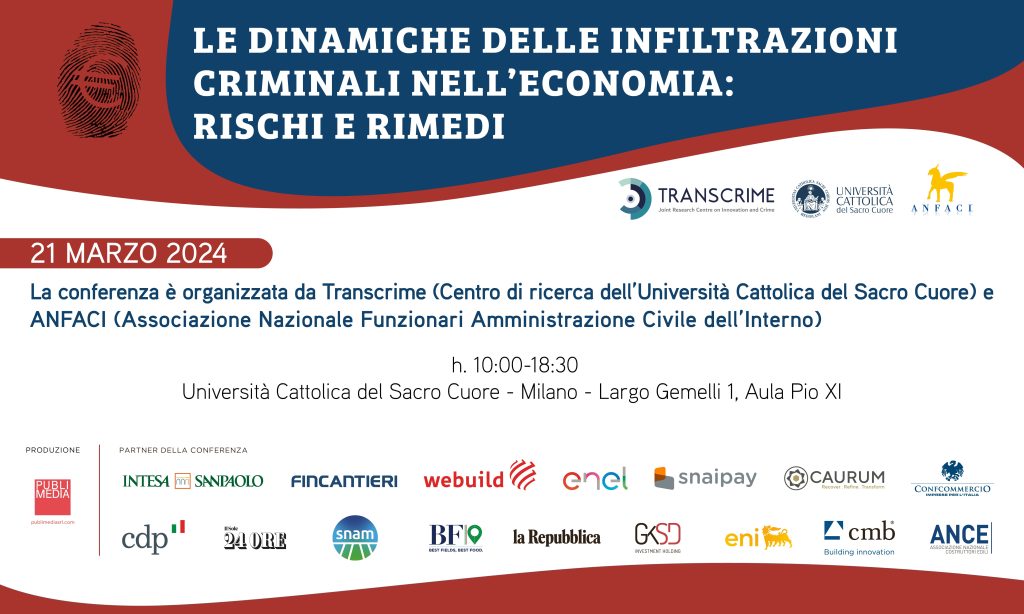
Conference: “The dynamics of criminal infiltration in the economy: risks and remedies”
“The dynamics of criminal infiltration in the economy: risks and remedies” Conference at: Università Cattolica del Sacro Cuore (Milan) Date: 21 March 2024 Time: 10:00-18:30 In italian Innovative methods of infiltrating the economy, emerging forms of criminal entrepreneurship, and sophisticated…
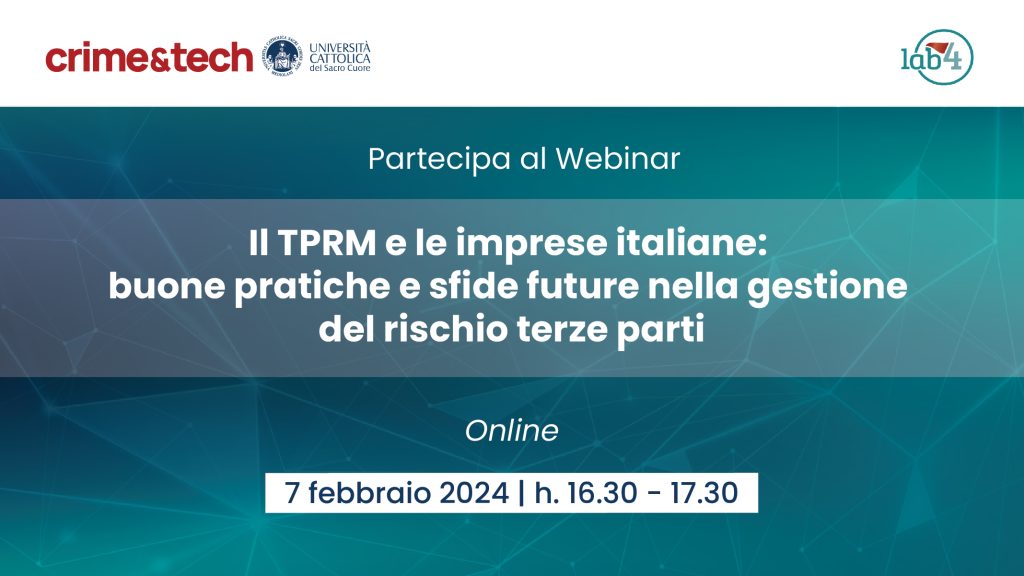
Crime&tech webinar: “TPRM and Italian companies” [ITA]
TPRM and Italian companies: best practices and future challenges in third-party risk management Webinar in Italian Wednesday 7 February 2024 h. 16.30 – 17.30 Increasingly interconnected economies, turbulent geopolitical dynamics and ever-increasing levels of scrutiny: in this context, Third Party Risk Management (TPRM) processes play…
